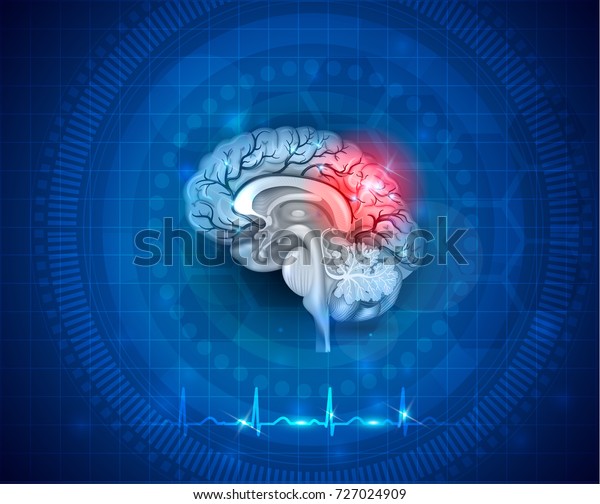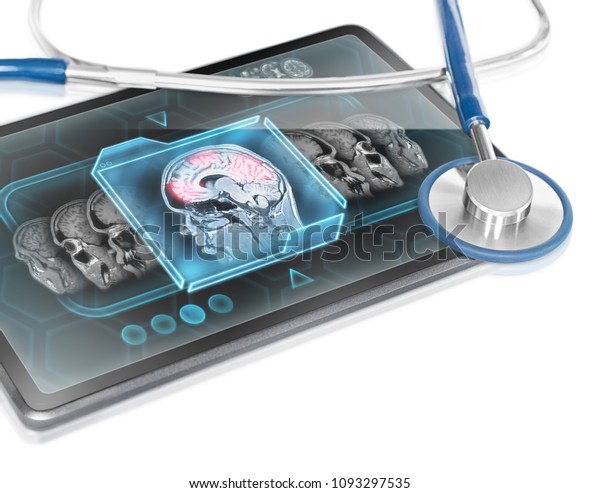The cognitive perspective is mainly concerned with mental functions such as memory, perception, attention, etc. It views people as being similar to computers in the way we process information (e.g., input-process-output). For example, human brains and computers process information, store data and have input an output procedure.
This had led cognitive psychologists to explain that memory consists of three stages: encoding ( it is a process where information is received and attended to), storage (In this process, the information is retained) and retrieval (the information is recalled in this process).
It is a scientific approach and typically uses lab experiments to study human behavior. The cognitive approach has many applications including cognitive therapy and eyewitness testimony.
Cognitive Perspective

What is cognitive psychology?
Cognitive psychology is the scientific study of the mind as an information processor. Cognitive psychology focuses on the way people process information. It works on how we process and receive the information and how the received information leads to our responses.
Wilhelm Wundt was the Scientist, who found the first psychological laboratory.
His initiative was soon followed by other European and American Universities. These early laboratories, through experiments, explored areas such as memory and sensory perception, both of which Wundt believed to be closely related to physiological processes in the brain. The whole movement had evolved from the early philosophers, such as Aristotle and Plato. Today this approach is known as cognitive psychology.
Summary
Cognitive Psychology revolves around the notion that if you want to know what makes people tick then the way to do it is to figure out what processes are actually going on in their minds.
Human Experimental Psychology
Human experimental psychology can be defined as the scientific and empirical approach to the study of the mind. The experimental approach means that tests are administered to participants, with both control and experimental conditions.
This means that a group of participants are exposed to a stimulus (or stimuli), and their behavior in response is recorded. This behavior is compared to some kind of control condition, which could be either a neutral stimulus, the absence of a stimulus, or against a control group.
Summary
Human experimental psychology is concerned with testing theories of human thoughts, feelings, actions, and beyond any aspect of being human that involves the mind.
Human experimental psychology is further categorized into memory, attention, problem-solving, and language.
Memory
Cognitive psychologist Margaret W. Matlin has described memory as the “process of retaining information over time.” Others have defined it as the ability to use past experiences to determine future path.
How we form memories?
The process of encoding a memory begins when we are born and occurs continuously. For something to become a memory, it must first be picked up by one or more of our senses. A memory starts off in short-term storage. We learn how to tie our shoe, for example. Once we have the process down, it goes into our long-term memory and we can do it without consciously thinking about the steps involved.
Motivation is also a consideration, in that information relating to something that we have a keen interest in is more likely to be stored in our long-term memory. That is why some people might be able to recall the stats of a favorite baseball player years after they have retired or where a favorite pair of shoes was purchased.
Summary
Memory loss is often associated with aging, but there are a number of things that can trigger short- and long-term memory loss, including injury, medications and witnessing a traumatic event.
What are the types of memory?
Following are the types of memory
- Short Term Memory
Short term memory is generally described as the recollection of things that happened immediately up to a few days. It is generally believed that five to nine items can be stored in active short-term memory and can be readily recalled.
Summary
Patients who suffer from short-term memory loss can not remember who walked into the room ten minutes before, but can remember their childhood friend from 50 years ago.
- Implicit memory
Implicit memory is sometimes referred to as unconscious memory or automatic memory. It uses past experiences to remember things without thinking about them. Musicians and professional athletes are said to have superior ability to form procedural memories.
- Procedural memory
Procedural memory is a subset of implicit memory, it is a part of the long-term memory responsible for knowing how to do things, also known as motor skills. We do not have to delve into our memory to recall how to walk each time we take a step.
Some examples of procedural memory:
-
Playing piano
-
Ice skating
-
Playing tennis
-
Swimming
-
Climbing stairs
-
Explicit Memory
Explicit memory sometimes referred to as declarative memory. It requires a more concerted effort to bring the surface. Declarative memory involves both semantic and episodic memory.
- Semantic memory
It is not connected to personal experience. Semantic memory includes things that are common knowledge, such as the names of states, the sounds of letters, the capitals of countries and other basic facts that are not in question. Some examples of semantic memory include:
-
Knowledge that the sky is blue
-
Knowing how to use a knife and fork
-
Remembering what dog is
-
Episodic memory
Episodic memory is a person’s unique recollections of a specific event or an episode. People are usually able to associate particular details with an episodic memory, such as how they felt, the time and place, and other particulars. It is not clear as to why some memories of events in our lives are committed to memory, while others do not get recorded, but researchers believe that emotions play a critical role in what we remember.
Some examples of episodic memory:
- Where we were and the people we were with when we found out about the Challenger space shuttle disaster
- Your beach vacation last summer
- The first time we traveled by plane
- Our first day at a new job
How to improve memory?
There are many fun, simple and even delicious ways to improve your memory.
Exercising your mind and body, enjoying a quality piece of chocolate and reducing the amount of added sugar in your diet are all excellent techniques.
Try adding a few of the science-backed tips to your daily routine to boost your brain health and keep your memory in top condition.
Summary
There are three main stages of memory, which are encoding, storage, and retrieval. Problems can occur at any of these stages. The three main forms of memory storage are sensory memory, short-term memory, and long-term memory.

Attention
Attention is the taking possession by the mind, in clear and vivid form, of one out of what seem several simultaneously possible objects or trains of thought. Focalization, concentration of consciousness are of its essence. It implies withdrawal from some things in order to deal effectively with others.
What are the types of attention?
Many aspects of attention have been studied in the field of psychology. In some respects, we define different types of attention by the nature of the task used to study it.
- divided attention
Divided attention tasks allow us to determine how well individuals can attend to many sources of information at once.
- Spatial attention
Spatial attention refers specifically to how we focus on one part of our environment and how we move attention to other locations in the environment.
- selective attention
In selective attention some information is attended to while other information is intentionally blocked out. Selective attention is the ability to select certain stimuli in the environment to process, while ignoring distracting information.
Summary
It may be useful to think of attention as a mental resource, one that is needed to focus on and fully process important information, especially when there is a lot of distracting “noise” threatening to obscure the message. Our selective attention system allows us to find or track an object or conversation in the midst of distractions. Whether the selection process occurs early or late in the analysis of those events has been the focus of considerable research, and in fact how selection occurs may very well depend on the specific conditions. With respect to divided attention, in general we can only perform one cognitively demanding task at a time, and we may not even be aware of unattended events even though they might seem too obvious to miss.
Problem-solving
What is problem solving?
A problem arises when we need to overcome some obstacle in order to get from our current state to a desired state. Problem solving is the process that an organism implements in order to try to get from the current state to the desired state.
An historical review of approaches to problem solving
The behaviourist approach
Behaviourist researchers argued that problem solving was a reproductive process; that is, organisms faced with a problem applied behaviour that had been successful on a previous occasion. Successful behaviour was itself believed to have been arrived at through a process of trial-and-error. In 1911 Edward Thorndikehad developed his law of effect after observing cats discover how to escape from the cage into which he had placed them.
Summary
Gestalt psychologists argued that problem solving was a productive process. In particular, in the process of thinking about a problem individuals sometimes “restructured” their representation of the problem, leading to a flash of insight that enabled them to reach a solution.
Language
Language can be defined as the complex method which is used by humans in order to communicate with each other.
It is important to note that language should be structured and based on the words which are stored in the people’s minds as dictionary. From this point, if language is a system and structure to use words while speaking and writing appropriately, lexicon is the complex of those words preserving in the human mind.
Cognitive psychology studies the aspects of human cognition. Many processes of human cognition depend on language and its qualities. Thus, to realize the cognitive processes, people perceive, understand, learn, and remember a lot of information presented in the form of language. From this perspective, language is the stable structure which develops within the society, but it is perceived by persons individually.
Summary
Communication is the specific ability of humans to exchange their thoughts and ideas with the help of certain spoken signals and written signs which contain the definite meaning and can be successfully recognized by the participants of the communication process. Meaningful signals, signs, and symbols are combined in a complex known as language.
Computer Analogies Information Processing Approach
Information processing theory is a cognitive theory that uses computer processing as a metaphor for the workings of the human brain. Initially proposed by George A. Miller and other American psychologists in the 1950s, the theory describes how people focus on information and encode it into their memories.
The information-processing approach focuses on how the human memory system acquires, transforms, compacts, elaborates, encodes, retrieves, and uses information. The memory system is divided into three main storage structures: sensory registers, short-term memory, and long-term memory. Each structure is synonymous with a type of processing.
Summary
To understand how an individual is able to interpret information, the researcher must first focus on decisions made at each memory storage structure. Within the information-processing model, attention and pattern recognition determine the environmental factors that are processed. A large amount of information impinges on the sensory registers, but it is quickly lost if not attended to. Attention, therefore, plays an important role in selecting sensory information.
Informational processing approach is further categorized into Artificial intelligence and Computer Stimulation.
Artificial Intelligence
Artificial intelligence is intelligence exhibited by machines. In computer science, an ideal “intelligent” machine is a flexible rational agent that perceives its environment and takes actions that maximize its chance of success at some goal. Colloquially, the term “artificial intelligence” is applied when a machine mimics “cognitive” functions that humans associate with other human minds, such as “learning” and “problem solving”.
Summary
Cognitive scientists work collectively in hope of understanding the mind and its interactions with the surrounding world much like other sciences do.
Computer stimulation
Computer stimulation is the use of a computer to represent the dynamic responses of one system by the behaviour of another system modeled after it. A simulation uses a mathematical description, or model, of a real system in the form of a computer program. This model is composed of equations that duplicate the functional relationships within the real system. When the program is run, the resulting mathematical dynamics form an analog of the behaviour of the real system, with the results presented in the form of data. A simulation can also take the form of a computer-graphics image that represents dynamic processes in an animated sequence.
Summary
Computer simulations are used to study the dynamic behaviour of objects or systems in response to conditions that cannot be easily or safely applied in real life.
Cognitive Neuroscience
Cognitive neuroscience is the study of how the brain enables the mind. Brain science explores how individual neurons operate and communicate to form complex neuronal architectures that comprise the human brain. Cognitive science uses the experimental methods of cognitive psychology and artificial intelligence to create and test models of higher-level cognition such as thought and language. Cognitive neuroscience bridges these two domains. It maps higher-level cognitive functions to known brain architectures and known modes of neuronal processing.
Summary
Cognitive Neuroscience is an interdisciplinary area of research that combines measurement of brain activity (mostly by means of neuroimaging) with a simultaneous performance of cognitive tasks by human subjects.
Brain Damage and effect on cognition
Brain damage occurs when a person’s brain is injured due to traumatic injury, such as a fall or car accident, or nontraumatic injury, such as a stroke.
Doctors more commonly refer to brain damage as brain injury because this term better describes what’s happening in the brain.
Brain damage can affect cognition in many ways. After brain damage, it is common for people to have problems with concentration, memory, speech, and even with problem-solving.
Problems with reasoning, problem-solving and judgment
- Individuals with brain damage may have difficulty recognizing when there is a problem, which is the first step in problem-solving.
- They may have trouble analyzing information or changing the way they are thinking (being flexible).
- When solving problems, they may have difficulty deciding the best solution, or get stuck on one solution and not consider other, better options.
- They may make quick decisions without thinking about the consequences, or not use the best judgment.
What can be done to improve reasoning and problem-solving?
- A speech therapist or psychologist experienced in cognitive rehabilitation can teach an organized approach for daily problem-solving.
- Work through a step-by-step problem-solving strategy in writing: define the problem; brain-storm possible solutions; list the pros and cons of each solution; pick a solution to try; evaluate the success of the solution; and try another solution if the first one doesn’t work.
Summary
After a brain damage it is common for people to have problems with attention, concentration, speech and language, learning and memory, reasoning, planning and problem-solving.

Perspectives Conclusion
Therefore, in conclusion, there are so many different perspectives in psychology to explain the different types of behavior and give different angles. No one perspective has explanatory powers over the rest.
Frequently Asked Questions
The cognitive perspective is concerned with “mental” functions such as memory, perception, attention, etc. It views people as being similar to computers in the way we process information (e.g., input-process-output). The cognitive approach has many applications including cognitive therapy and eyewitness testimony.
Learning is an example of cognition. The way our brain makes connection as we learn concepts in different ways to remember what we have learned. Our ability to reason through logic is a prime example of cognition. People do have different ways of reasoning if we think about why people buy certain things when they shop.
The cognitive perspective , operates on the belief that the brain is the most important aspect in relation to the way that an individual behaves or thinks. This perspective states that to understand someone, you must first be able to understand what is happening in their mind.
The cognitive approach in psychology is a relatively modern approach to human behaviour that focuses on how we think. It assumes that our thought processes affect the way in which we behave.
Cognitive psychology explores our mental processes. Cognitive psychologists, sometimes called brain scientists, study how the human brain works how we think, remember and learn. They apply psychological science to understand how we perceive events and make decisions.



